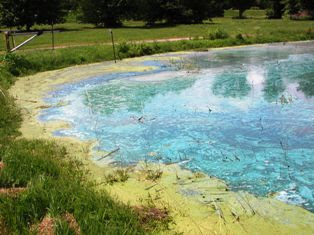As you know, we sample Thompson Lake weekly up until the last months when we opted to go out every two weeks (cold and/or bad weather). You may not know, the transom on the Prairie Shark (boat) has fractures and we are thankful that it carried us through ice-cold waters these last days without mishap (I had to go swimming for it a month or two ago and that was cold enough for me!). Our faithful boat goes into dry dock for repair if I can locate a good aluminum welder.
And alas Jack London fans, with the recent cold weather, 2" of ice is across the lake. It is too thick to navigate and too thin to walk on (though we might in a few weeks; skating party anyone?). So - we finally have our rest from field work.
There are good days, scary days, and just plain miserable days on the lake when you are running a schedule, but they are all very much "alive" days, and perhaps this another reason we do it.
Many, many thanks to our field technician, Doyn, and volunteers for helping out on the project. It has been a long year but I am convinced we are on to trends that will be groundbreaking. I am now looking for time/funds to process the 2009 samples as recent data and published literature indicates that the trends we are discovering on Thompson reflect circumpolar trends throughout the world (NOTE - PNAS at http://www.pnas.org/content/106/50/21208.full.pdf+html).
And so, this is the rhythm and consistency of field work and the science that goes with it. Should we teach this to our next generation? - - - - without a doubt.
To that end, Michael Cheney and I met yesterday and outlined a 2 week course that would meet needs for the International Study defined by Jonathan Goldbergbelle BUT also be a very good UIS upper division/graduate course. I get many inquiries about field study classes and work at Emiquon. We are at first draft stage with much room for input, but Michael is writing up the notes and we will share soon.
Take care - all the best for the holidays - and most of all, thank you for your support of the field station and the restoration of an amazing area -
Mike










